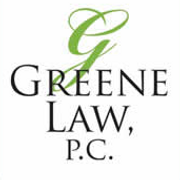
When it comes to discharging personal debt, there are two primary types of bankruptcy that can help: Chapter 7 and 13. Although both can provide a much-needed fresh start, each requires a different approach to complete. If you’re struggling financially and think filing for bankruptcy may be the answer, here is what you should know about the major differences between Chapter 7 and 13.
Chapter 7 Bankruptcy
Chapter 7 bankruptcy is for those who cannot afford to make even the minimum payments on their various debts. If you have accumulated so much debt that you will never be able to pay it off—and you’re struggling to make ends meet even without such obligations—Chapter 7 may be the answer. Also known as liquidation bankruptcy, this approach requires petitioners to sell nonexempt assets and use the proceeds to pay back creditors. Then, any applicable debts that remain are discharged.
Chapter 13 Bankruptcy
 If you have income left over every month to pay your debts but making multiple payments to multiple lenders has become unmanageable, Chapter 13 is worth exploring. Often called reorganization bankruptcy, this approach requires petitioners to devise a three- to five-year repayment plan. This plan essentially consolidates applicable debts because you only have to make a single payment every month. Then, after the plan has ended, any debt that remains is discharged.
If you have income left over every month to pay your debts but making multiple payments to multiple lenders has become unmanageable, Chapter 13 is worth exploring. Often called reorganization bankruptcy, this approach requires petitioners to devise a three- to five-year repayment plan. This plan essentially consolidates applicable debts because you only have to make a single payment every month. Then, after the plan has ended, any debt that remains is discharged.
The bankruptcy attorneys at Greene Law PC aim to help those who are in debt eliminate outstanding balances and regain their lives. Located in Farmington, CT, this firm offers a broad range of legal services. Whether you need guidance on estate planning, divorce, or real estate, you can count on them to help. To learn more about Chapter 7 and 13—and determine which is right for you—call (860) 676-1336. To learn more about their bankruptcy services, visit their website.
About the Business
Have a question? Ask the experts!
Send your question

